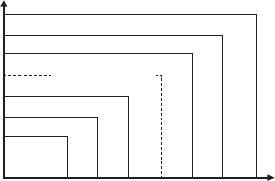
6
on the arterial wall when there is no distension outward
or inward. MAP is an excellent way to evaluate the
stress on the walls of your blood vessels, and can be
used to evaluate excessive load on the cardiovascular
system. Show your MAP history to your doctor to
provide additional information that may help him or her
understand your situation.
Why measure your blood pressure?
Blood pressure measurement can highly reflect one’s
health condition. High blood pressure is potentially linked
to serious illnesses such as stroke, heart disease and
kidney failure.
Since there is no symptom most of the time, many
hypertensive people do not realize they are at risk until
their health is seriously threatened.
What is the standard blood pressure classification?
Figure 3 illustrates the blood pressure classifications
by World Health Organization (WHO) and International
Society of Hypertension (ISH) in 1999.
Reference material: 1999 World Health Organization
International Society of Hypertension Guidelines for the
management of hypertension, Journal of Hypertension,
1999, 17(2): 151-183.
NOTE:
• Blood pressure is considered high when either the
diastolic or systolic blood pressure value exceeds the
normal range. When a patient’s systolic and diastolic
blood pressures fall into different categories, the
higher category should apply.
• Only a physician can tell you your normal blood
pressure range and the point at which you are at risk.
Consult your physician to obtain these values. If the
measurements taken with these products fall outside
the range, consult your physician.
Why does my blood pressure fluctuate
throughout the day?
Individual blood pressure varies greatly both on a daily
and a seasonal or temperature basis. These variations
may be more pronounced in hypertensive patients.
Normally the blood pressure rises while at work and is at
its lowest during sleep.
5
Caring for your Blood pressure monitor
To ensure you receive the maximum benefit from
using this product, please observe the following care
guidelines.
• When not in use, store the unit in a dry place away
from direct sunlight.
• Do not immerse the unit in water. If it comes in
contact with water, dry it immediately with a soft lint-
free cloth.
• Use a soft, slightly moistened cloth to wipe off the unit
and cuff. Do not use abrasive or corrosive cleaning
agents, as these may cause damage.
• Remove the batteries whenever you are planning to
store the unit for a long period of time.
• When replacing batteries, use new batteries as
specified in this user manual. Do not mix new and old
batteries.
• Do not place objects such as stickers on the wrist cuff
or unit, as these may impair the measurement.
• Do not subject the unit to excessive force, shock,
dust, temperature changes, or humidity. Such
treatment may result in malfunction, a shorter
electronic life span, damaged batteries, or distorted
parts.
• Do not tamper with the internal components. Doing
so will terminate the product warranty and may cause
damage.
• The unit contains no user- serviceable parts.
• If you no longer need to use this product, protect
the environment by bringing it to your dealer or
designated collection point for proper disposal.
About Blood Pressure
What is blood pressure?
Blood pressure is the force generated by the blood
against the walls of arteries during cardiac contraction
and relaxation (e.g., the pumping action of the heart).
What are systolic pressure and diastolic pressure?
When ventricles contract and pump blood out of the
heart, blood pressure reaches its maximum value.
This highest pressure in the cycle is known as systolic
pressure. When the heart relaxes between heartbeats,
the lowest blood pressure is diastolic pressure.
What is mean arterial pressure (MAP)?
The mean arterial pressure (MAP) is the average
pressure that forces blood through the arteries. It is
not the average of the systolic and diastolic blood
pressure; rather, MAP corresponds to a state of balance
between the compressive and expansive forces acting
120 130 140 150 160 170 180
110
100
95
90
85
80
Grade 3 hypertension (severe)
Grade 2 hypertension (moderate)
Grade 1 hypertension (mild)
Subgroup borderline
High-normal Blood Pressure
Normal Blood Pressure
Optimal Blood
Pressure
Diastolic blood pressure (mmHg)
Systolic blood pressure (mmHg)













